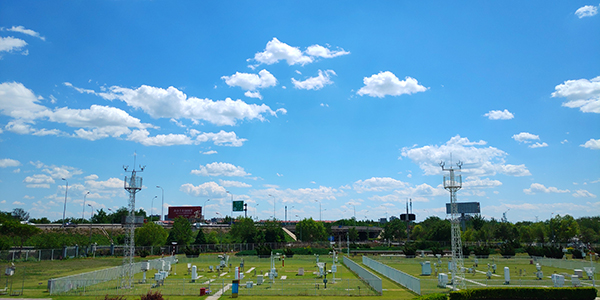In a major step towards understanding climate change, a recent study published in the International Journal of Climatology has homogenized and analyzed over a century's worth of daily temperature data from the Beijing Observatory, spanning from 1915 to 2021.
This comprehensive study, conducted by researchers from the Institute of Atmospheric Physics (IAP) of the Chinese Academy of Sciences, the Beijing Meteorological Data Center and the Beijing Municipal Climate Center, addresses the critical challenge of data inhomogeneity in long-term climate records.
Climate change remains a pressing global issue that requires accurate data for informed decision-making and policy development. However, long-term climate data often suffer from inconsistencies due to various non-natural factors such as station relocations, changes in instrumentation, and observation practices. These factors introduce biases, making it difficult to accurately assess climate trends. By homogenizing these data series, researchers can correct these biases and draw more reliable conclusions about climate change.
In this study, the researchers used a novel homogenization method that effectively handles complex daily temperature series. By employing more complete historical records and advanced statistical techniques, they identified and adjusted for three primary types of non-climatic biases: station relocations, calculation methods, and measurement transitions.
The adjustments for these biases ranged from -1.13 to 0.63 ℃, -0.29 to 0.23 ℃, and -0.13 to 0.00 ℃, respectively. After these adjustments, the newly homogenized temperature series showed a significant warming trend of 0.199℃ per decade from 1915 to 2021, with winter showing the most pronounced increase.
"Compared with previous studies, our new homogenized data takes into account and reduces the impact of three non-natural factors, which better reflects the true temperature changes," said Dr. LI Zhen, corresponding author of the study from IAP, "the previous temperature trends ranged from 0.136 to 0.177 ℃ per decade. Our more effective adjustments, especially those accounting for station relocations to more urban areas, showed a higher warming trend."
The new study highlights the necessity and effectiveness of the homogenization process in providing a more accurate picture of climate change. Notably, the team also developed the longest continuous daily temperature sequence for Shanghai (1873-2019) and constructed homogenized datasets for China and Greece, facilitating comparative studies of regional climate extremes.
"These collaborations have been invaluable. By combining resources and expertise, we've been able to produce high-quality climate data that are essential for accurate assessments of climate change," said Dr. LI.
The Beijing Observatory, a site of significant historical climate data, plays a crucial role in understanding long-term climate trends. (Image by YIN Jiali)





